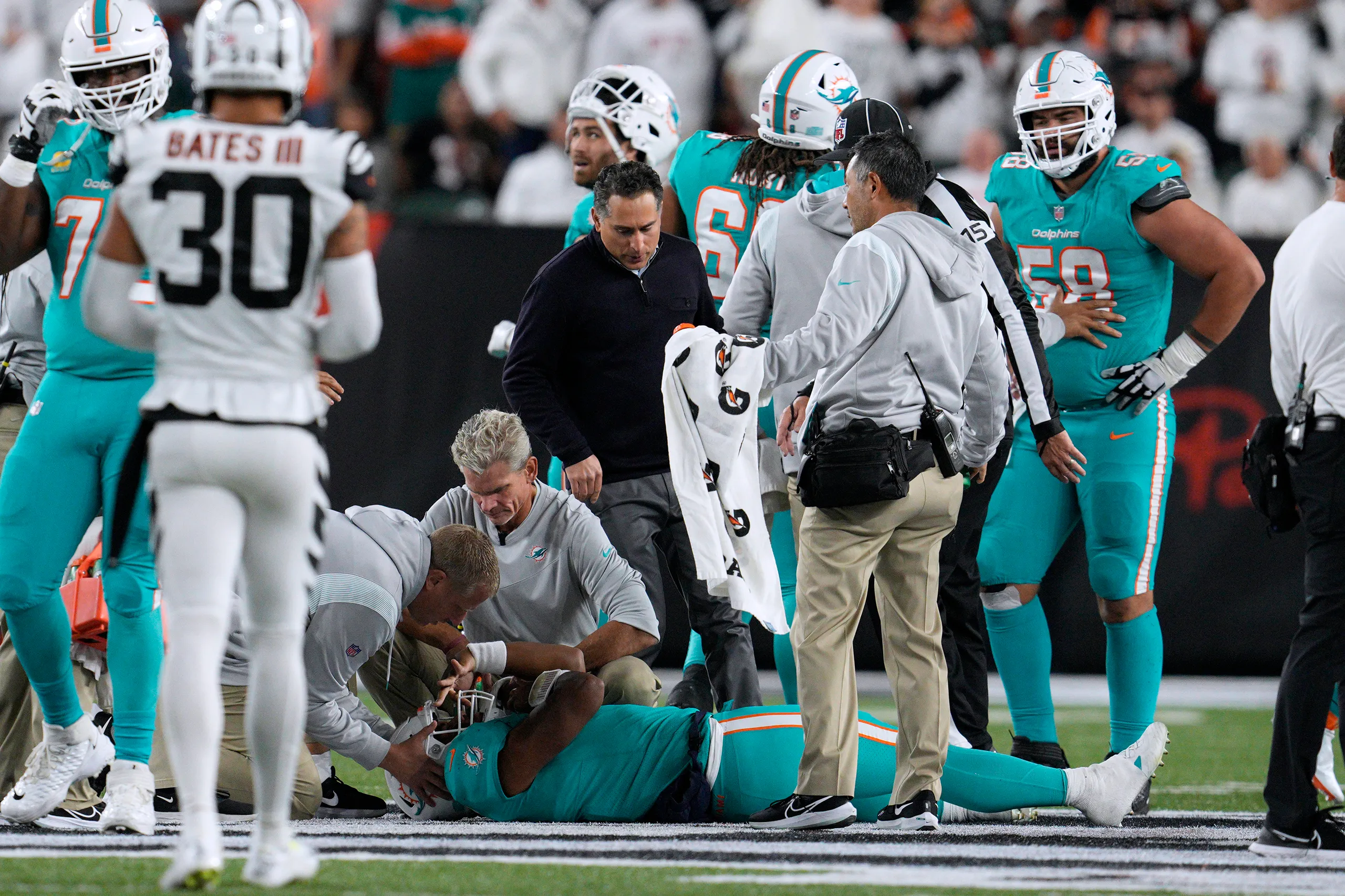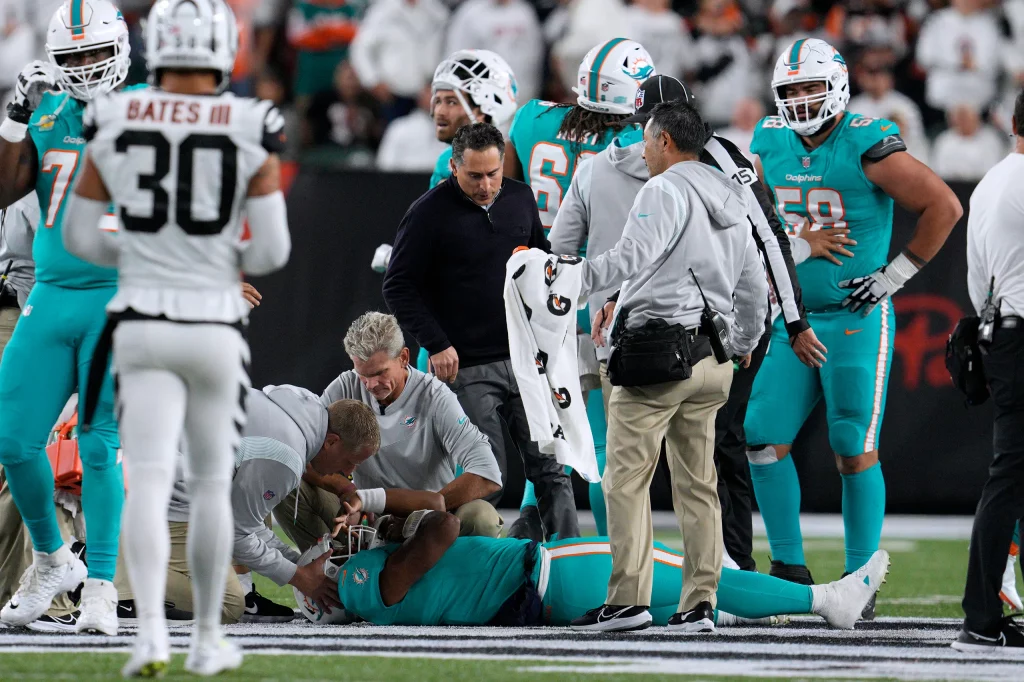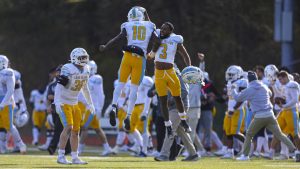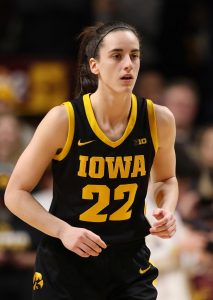By Joe Frescott, Assistant Sports Editor
The National Football League (NFL) and it’s Players’ Association (NFLPA) conducted a joint investigation on the treatment of Miami Dolphins quarterback Tua Tagovailoa following consecutive weeks of head injuries.
The initial injury sustained took place in the second quarter of the Dolphin’s Week 3 victory over the Buffalo Bills on Sept. 25. Tagovailoa was shoved by Bills linebacker Matt Milano, hitting his head against the turf. Aft the big hit, the Hawain native stumbled when trying to get up.
The video, which went viral for the gross motor instability displayed by Tagovailoa, seemed to be a clear indication that the promising young quarterback was concussed and would not return to the game. However, Tagovailoa was reported to have a mild back injury, clearing concussion protocols and returning to the game in the third quarter.
With the situation already raising some questions regarding the protocol and player safety, Tagovailoa started the following Thursday, Sept. 29, against the Cincinnati Bengals and sustained another head injury in the second quarter.
This injury, which occurred with 5 minutes and 15 seconds left in the first half, was particularly scary, as following the sack by Bengals defensive lineman Josh Tupou, Tagovalioa’s arms and fingers went stiff, displaying a condition known as a “fencing response” that occurs after an individual gets knocked unconscious.
Thankfully, Tagovalioa was rushed to the hospital and was diagnosed with only a concussion, as many feared the damage was far greater.
Regardless of the mild diagnoses, Junior Broadcasting major Brendan Kaufman believes that Tagovalioa shouldn’t have been put in that situation.
“The Dolphins’ medical staff clearly didn’t do their job well enough considering that they cleared Tua [Tagovalioa] to play when it seemed obvious to everyone watching that he shouldn’t have been playing,” he said. “Tua [Tagovalioa] should’ve been benched for Bridgewater during that game long before it was forced to happen.”
Following the consecutive injuries, the NFL and NFLPA launched a two-week-long investigation, interviewing all of the staff and medical personnel involved in evaluating the injuries sustained by Tagovalia.
Immediately after the investigation launched, the Dolphins fired an unaffiliated neurotrauma consultant after they were found to have made “several mistakes” in their evaluation of Tagovailoa, according to ESPN.
Brady Campbell, a junior broadcasting major, felt it was unfair to place the blame on one person.
“I understand why they made the decision, but it’s not completely fair. This goes all the way down to the coaches,” he said. “Someone should have realized that he was unfit to play. As a college student who doesn’t study in this field, even I knew something was wrong.”
Kaufman agreed, citing that the member of the medical staff was likely a scapegoat.
“This firing was just the NFL or the Dolphins trying to find a fall guy for the whole situation,” he said. “It might have been this guy’s fault, but it was likely a group effort that caused this whole controversy rather than just this one neurotrauma consultant.”
The investigation concluded with a joint statement by both parties on Oct. 8, which stated that the issue was with the league’s concussion protocols, not the Miami Dolphins’ handling of it.
Campbell did not agree with this conclusion.
“I don’t think that they should have let him get back to football activities that quickly,” he said. “There are definitely some holes in the protocol, but the team did not handle it well at all based on the fact that he lost his balance and had clear signs of a concussion the week before.”
Despite the uproar that the Tagovalia situation caused, injuries of this nature are nothing new in the NFL. Although the number of concussions per season has declined over the last few years, there has still been an average of 228 concussions in practice and games per year since 2015.
Campbell, like many neurologists and medical experts, believes this is a problem that the NFL needs to address.
“Safety is a major issue in the NFL. Obviously, it’s a violent contact sport to begin with, so there will be plenty of injuries,” he said. “However, some of these injuries seem a lot more preventable with the right safety measures in place. I feel that the league is so caught up in what makes the sport fun that they forget the danger that comes with it.
With the NFL taking a lot of the blame for this incident, Kaufman believes the players have some responsibility as well.
“Players playing through injury makes sense from their point of view, but that doesn’t mean that they should. I think players should try to understand their limits a lot better than they currently do, and they 100% should not try to play through concussions since those things are dangerous,” he said. “Player safety, in general, is a huge issue in the NFL, and things like this are part of that in addition to other factors like inconsistent ruling for dirty or clean hits or poor field conditions like at Metlife [stadium].”
The NFL and NFLPA sought to address the issues found within the concussion protocol when they made revisions to include the diagnosis of “axatia.” According to NFL.com, “Ataxia is defined as an abnormality of balance/stability, motor coordination or dysfunctional speech caused by a neurological issue.” Under this new definition, players would not be allowed to return to play if they exhibit this condition in any way.
The updated protocol was put in place during Week 5 and already came into effect following an injury to Miami Dolphin’s backup quarterback Teddy Bridgewater, who was deemed unfit to return to the game under the new ruling.
Campbell believes that it shouldn’t stop there.
“I feel like they may want to find a way to use something like those ‘guardian’ caps that they wore in training camp to decrease the likelihood of a head, neck, or back injury. I also believe that they need to find a way to limit the risk of lower leg injuries,” he said. “Whether it’s the turf causing torn ligaments or seriously injuring an ankle due to the constant collisions and players landing on each other, there are plenty of other safety measures they should want to look to improve upon.”









Be First to Comment